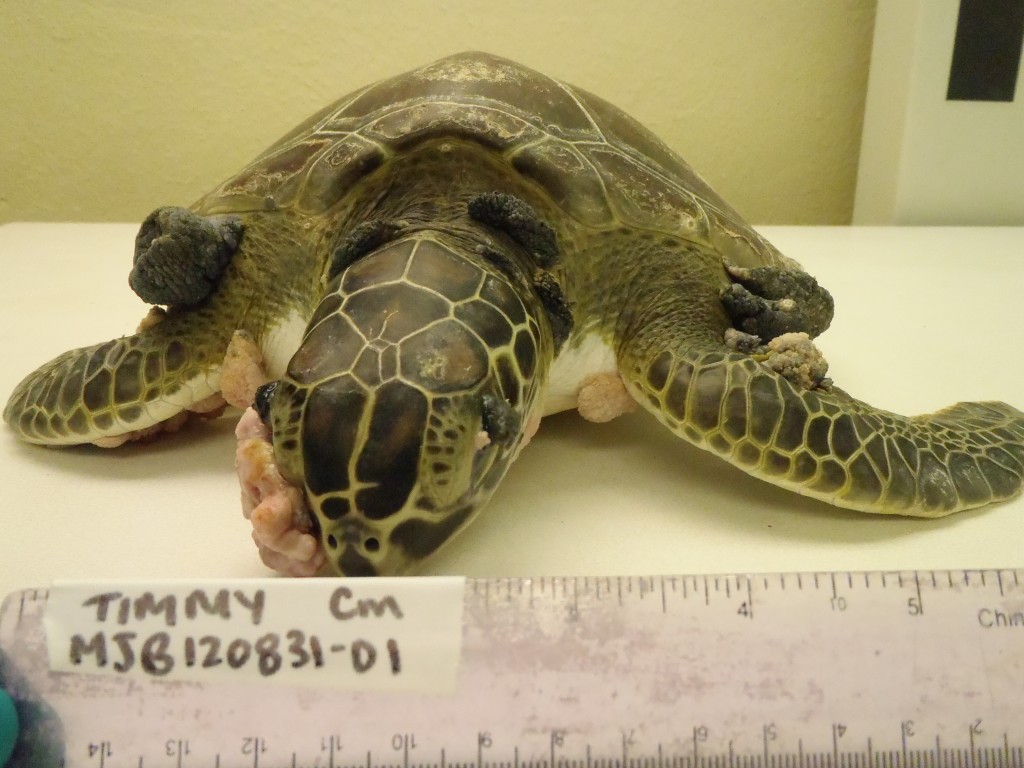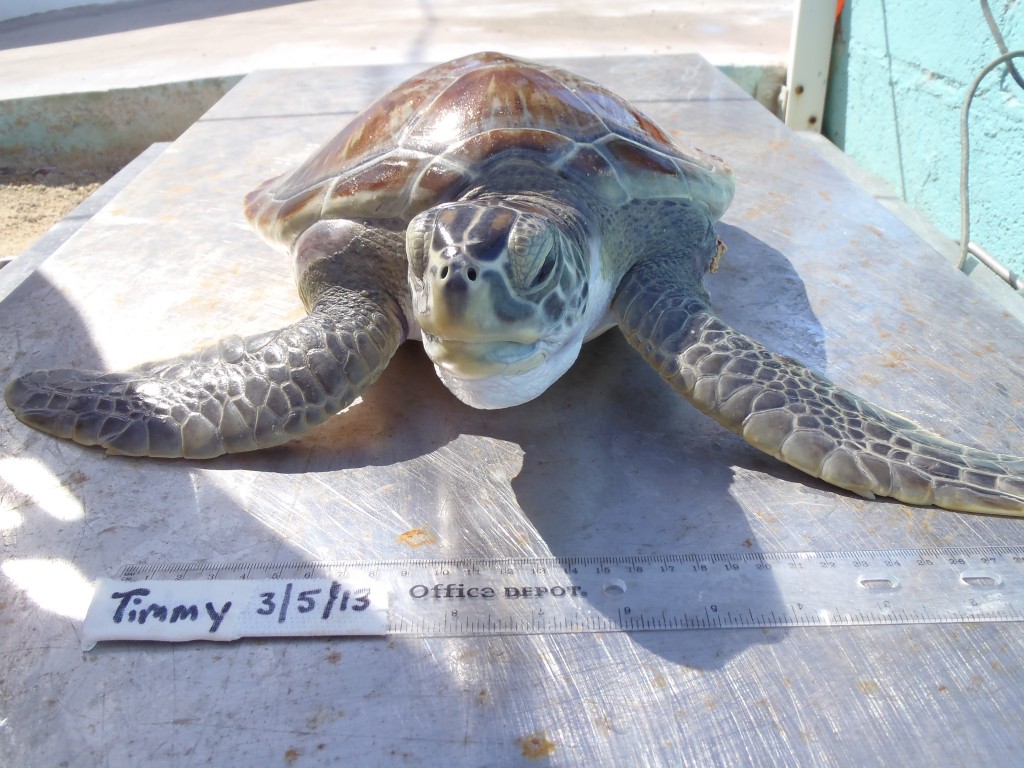Fibropapillomatosis is a disease specific to sea turtles. It was first documented in 1938 on a Green turtle in the New York Aquarium that had been captured around Key West, Florida. Since then fibropapilloma has become increasingly prevalent in Green sea turtle populations around the world. It is predominantly seen in warmer regions such as the Caribbean, Hawaii, Australia, and Japan. In certain parts of Florida such as the Indian River Lagoon and Florida Bay, 50-70% of the Green sea turtle population is afflicted. This disease is no longer specific to Green sea turtles, and is occasionally seen in Loggerheads, Kemp’s Ridleys, and Olive Ridleys.
Fibropapilloma is caused by a virus, and is commonly found in juveniles and sub-adults. Infected turtles grow benign cauliflower-like tumors on their soft and hard tissues, both internally and externally. The tumors are highly variable in size, ranging from small spots to large growths weighing upwards of three pounds. External tumors often grow around the shoulders and eyes of the turtles, impeding their movement and often blinding them. Internal tumors tend to grow on highly vascularized organs such as the kidneys, lungs and liver, and eventually lead to organ failure. While external tumors can be surgically removed, internals can not, and are almost always fatal.
The Turtle Hospital is one of the few facilities in the world that admits sea turtles with fibropapilloma. The hospital has been conducting research in conjunction with the University of Florida and the Albert Einstein College of Medicine Institute for Animal Studies since 1986. Through a series of coordinated experiments, the condition was first determined to be contagious amongst sea turtles, and was later narrowed down to a herpes-like virus. Current studies are focusing on how turtles come to be afflicted with FP, and the search for advanced treatments and an eventual cure is underway.


